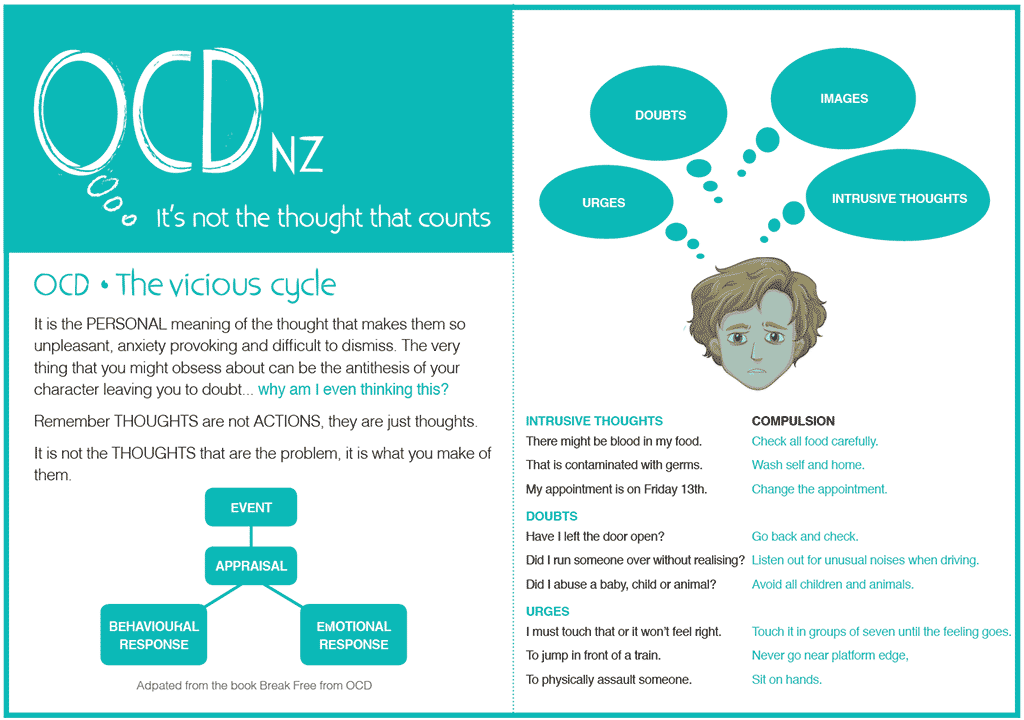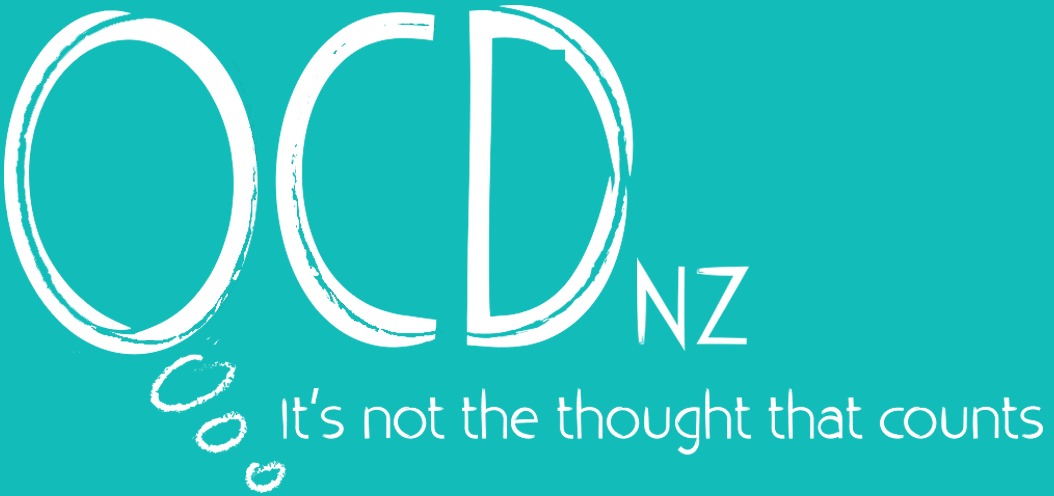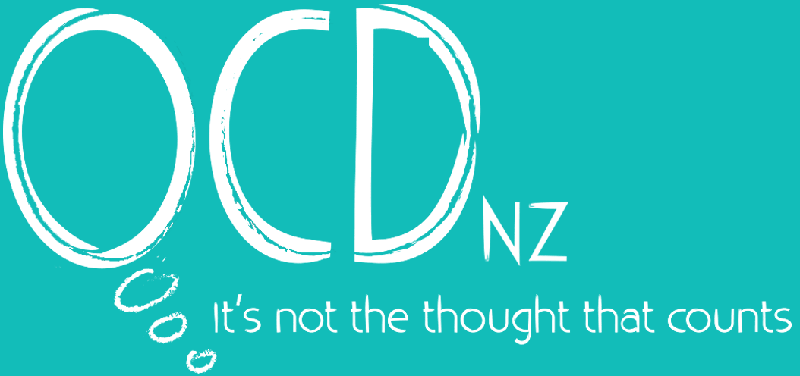INFORMATION IS KNOWLEDGE
There IS a pathway forward. The more knowledge and understanding you have about this condition, the more you can begin to take charge of your life or support someone who has OCD. For more detailed information please visit the New Zealand Mental Health Foundation webpage.
There is an enormous wealth of information available outside of New Zealand. The following links give some great educational information about OCD. You may find it helpful to print some of the brochures and share them with family and friends to help them better understand OCD.
WHAT IS OCD?
OCD is a complex condition with a wide variety of symptoms so people with OCD may manifest it differently. However there are two elements common to all forms of OCD, obsessions and compulsions.
Obsessions
Obsessions are persistent, unwanted thoughts, feelings or impulses that intrude on your mind. They usually incorporate themes of potential harm, or danger to yourself or, more often, to others. Obsessions cause excessive anxiety, worry and doubt.
Obsessions are unwanted and unacceptable thoughts that seem to appear in your mind in an unbidden way. They can be thoughts in words but can also be images, urges, as if one wants to do something, or feelings of doubt.
Compulsions
Compulsions are mental acts or repetitive behaviours you perform in an attempt to relieve or prevent the anxiety , worry or doubt caused by your obsessions. You may feel your compulsive behaviours have a seemingly magical power to prevent or avert dreaded events such as death, illness or some other feared misfortune.
Compulsions, (also called neutralising or safety seeking behaviours), are the physical or mental actions and reactions that follow from intrusive thoughts or obsessions and which are motivated by the meaning which the intrusion has for specifically for them (the individual).
There are two main types of compulsions.
One is to VERIFY ( to check, to make sure of) something, most commonly by physical or mental checking. The idea is that if you verify things, you feel completely sure that it is okay, or put it right if it is not.
The second type of compulsion, RESTITUTION, is where the person aims to put right, make amends or correct something they think has already happened for example, by cleaning something thoroughly which they regard as contaminated, or by thinking a positive thought after having a negative thought they regard as dangerous.
Sourced from the book -Coping with OCD in Resources section.
Sub Types of OCD
There are many different forms to OCD but interestingly, OCD treatment is the same no matter what the theme. Many people think OCD might only be about contamination or tidiness issues but it can be so much more.
There is no hierarchy to suffering. One obsession isn’t inherently worse than another. Some forms of OCD are more challenging to diagnose, and the contents of some obsessions are so taboo that people can endure silently without finding the help they need. Sometimes people may not know that they have OCD.
You can read about some of the sub types on the NOCD site and also on the IOCDF site.
This article from Vice also offers some subtypes with examples.
THE OBSESSIVE COMPULSIVE THOUGHT CYCLE

HELPING SOMEONE WITH OCD.
If you are supporting someone who is experiencing OCD then it is important to understand how to do this effectively. There are many useful resources intended for family members and partners.
Find out how family and friends can help someone with OCD here.


